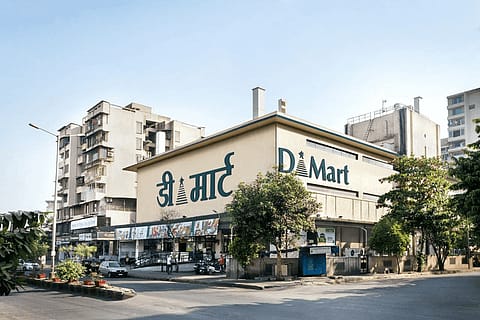DMart’s growth momentum slows as it refocuses on metro markets
DMart Ready, the company’s e-commerce vertical, has begun pulling back from smaller cities to consolidate operations in large metros

Avenue Supermarts Ltd, which runs the DMart retail chain, reported muted earnings in the September quarter (Q2FY26), even as it doubled down on store expansion and recalibrated its online arm DMart Ready to focus on metros.
According to Elara Securities’ update, DMart’s standalone sales rose 15.4% year-on-year to ₹162.2 billion, while profit after tax (PAT) grew 5.1% to ₹7.5 billion. Like-for-like (LFL) growth came in at 6.8% on a low base. However, higher employee costs weighed on profitability, with EBITDA margin slipping to 7.6%, down 28 basis points from a year ago.
“The earnings momentum remains muted as DMart is realigning its online business and investing in store expansion,” said Karan Taurani, senior vice president at Elara Securities. “Employee costs have run ahead of revenue growth, even as gross margins have stayed steady year-on-year.”
DMart Ready, the company’s e-commerce vertical, has begun pulling back from smaller cities to consolidate operations in large metros. After shutting operations in five cities - Amritsar, Belagavi, Bhilai, Chandigarh and Ghaziabad - in Q2, DMart Ready now operates in 19 cities. The company also added 10 new fulfilment centres in metros to strengthen its six-hour delivery target, compared with 60% of orders currently fulfilled within 12 hours.
“This realignment shows DMart’s intent to sharpen its metro focus to take on quick-commerce players,” said Taurani. “Sales from DMart Ready grew 16% year-on-year, but the EBITDA loss widened by 44% to ₹163 million.”
On the physical retail front, DMart added a net eight stores during the quarter, taking the total to 432, up 14.6% year-on-year, with most additions in Maharashtra. The retailer plans to add around 60 stores in FY26. Retail area expanded 13.3% YoY to 17.9 million sq ft.
Despite the festival boost from Navaratri falling in Q2 this year (versus Q3 last year), growth remained subdued. “Rising penetration by quick commerce may continue to pare DMart’s growth in top-up categories and high-demand items,” Taurani added.
Recommended Stories
Revenue per square foot grew modestly by 1.5% to ₹9,137, while net cash flow from operations rose 35% to ₹1.4 billion, aided by lower inventory drag. The food segment accounted for 57% of total revenue, up marginally from a year ago.
DMart currently trades at 78x and 66x estimated FY27 and FY28 earnings, respectively. Taurani noted that with an average EPS growth of just 4.1% over the past four quarters, “the Street may see an earnings downgrade.”
The bigger battle ahead lies in defending its value-retail turf against the rapid rise of quick commerce and maintaining profitability in an increasingly competitive grocery market.